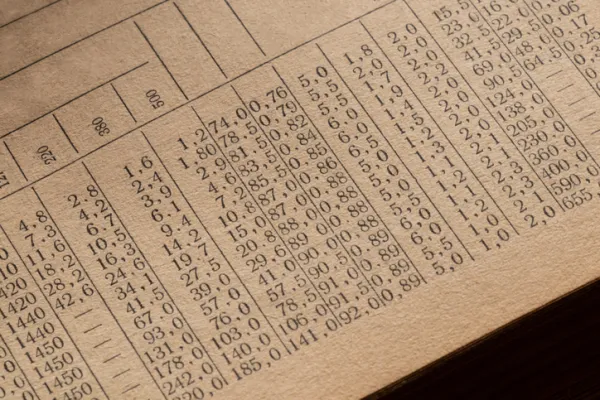The March meeting of the Federal Open Market Committee at the U.S. Federal Reserve Board’s headquarters was one of gloomiest in a long series of very gloomy sessions since the onset of the financial crisis nearly two years ago.
All the economic forecasts were being revised downward; the Fed’s efforts at expanding student, auto and credit card loans were faltering in the starting blocks; and enormous doubts were hanging over besieged Treasury Secretary Timothy Geithner’s exhaustively debated plans to remove toxic assets from bank balance sheets. Adding to the foreboding mood: The meeting took place amid uproar on Capitol Hill over bonuses being doled out at bailout recipient American International Group. Some of the most blistering criticisms were aimed directly at the Fed, which is working closely with the Treasury on the insurer’s restructuring.
It’s a time to be bold, chairman Ben Bernanke told his FOMC colleagues as he laid out the case for the Fed to take the daring step of purchasing billions of U.S. Treasury securities, an idea he had floated in a December speech. The committee backed Bernanke’s proposal to buy some $300 billion in Treasuries over the next six months and to sharply escalate the scale of its purchases of government-sponsored-enterprise paper and mortgage-backed securities to $1.45 trillion from $600 billion.
"The chairman was in essence arguing that the Fed may be the only game in town," recalls one Fed official, who spoke on condition of anonymity. "There was debate, of course, but everyone knew what the outcome would be. This was Ben’s moment."
The dynamics of the meeting marked the latest evolution of Bernanke’s leadership style — from the collegial professor to the more forceful student of the Great Depression who is stepping up in the crisis to make sure the Fed does not repeat its mistakes of the 1930s. That means following the FOMC’s December decision to effectively lower rates to zero with the prompt commitment to expand the central bank’s balance sheet by more than $4 trillion by year-end — an unprecedented fourfold increase in barely 15 months.
It also means leading the Fed into the brave new world of monetary policy through nontraditional methods, or what Bernanke prefers to describe as balance-sheet-based "credit easing" but that everyone else calls quantitative easing.
Whatever it’s called, the adoption of CE-QE caught the market utterly off guard, triggering one of the biggest Treasury rallies in memory and driving the yield on the benchmark ten-year bond down by half a percentage point, to 2.51 percent. The decision came as a shock because, although Bernanke first mooted the possibility of the Fed’s buying Treasuries several years ago, central bank officials had gone out of their way in recent weeks to dampen expectations of an imminent move.
When the FOMC first said in its December statement that it would evaluate whether to buy Treasuries, it was a rearguard move to provide cover for the chairman, who had broached the idea in a speech at the start of that month. The statement triggered a drop in Treasury yields, but the FOMC was nowhere near a consensus on the concept, sources say. Many members worried that the Fed would be seen as monetizing what was inevitably going to be a mind-blowing surge in federal deficit spending. Others thought the central bank should concentrate on bringing down mortgage rates by sticking to a $500 billion program to purchase mortgage-backed securities.
The FOMC moved no closer to a consensus by the time of its January meeting; the committee’s statement referred to such purchases as likely to happen only "if evolving circumstances" warranted them.
Just weeks ago Bernanke had appeared to step back from the Treasury purchase scheme by not mentioning the idea at all in speeches or testimony in late February. William Dudley, president of the New York Fed, had also seemed to go out of his way to dampen market expectations of near-term Treasury purchases in public remarks barely a week before the March FOMC meeting.
By mid-March, however, the terms of the debate had changed dramatically. The Fed staff’s economic forecasts were all being revised downward, with one scenario citing the risk that a fresh jolt to confidence could set off another negative feedback loop of plunging asset valuations and constrained consumer spending, as had happened after the collapse of Lehman Brothers Holdings in September. Several committee members voiced concerns that deflation could become embedded in future price expectations.
Bernanke argued that the Fed could directly reduce borrowing costs by increasing the size of its balance sheet to buy longer-dated Treasuries, sources say. The chairman quickly found support from members who contended that the central bank should expand the balance sheet as a policy objective in itself, adopting a "quantitative metric" to supplant the traditional practice of targeting the federal funds rate. The Fed’s balance sheet had been shrinking rather than expanding because of falling demand for its dollar swap and commercial paper funding facilities. By contrast, the attraction of the Treasury and MBS purchase schemes was that the Fed itself would control the pace of lending and could accelerate purchases if needed.
In pushing ahead with the plan, the Fed signaled that it means business, sources say. If the $300 billion doesn’t ease credit conditions, the central bank intends to keep buying more until it succeeds. Some Fed officials are calling the strategy the Bernanke doctrine — a monetary policy version of retired general Colin Powell’s military engagement through overwhelming force — in which every policy lever at the Fed’s disposal is being marshaled to avert economic collapse.






